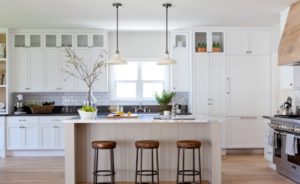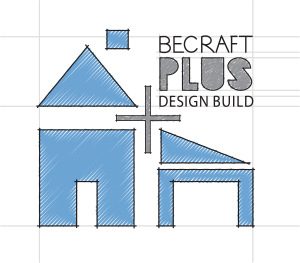
What is Shaker Design?
Shaker design gets its principals from the 18th-century Shakers community. Shakers viewed simplicity and careful work as a form of prayer, which led to the design of beautifully pared-down furniture, revered to this day by modern and traditional design lovers alike. As a result, their style of design is believed to be an early attempt at what we now know as minimalism. The two aesthetics share many of the same traits. However, Shaker design has a decidedly more natural flair to it than the ultra-modern sleekness we see in many of today’s minimal interiors.
Function Over Form Every Time
The minimalist style of Shaker furniture is governed by the guiding principles of honesty, utility, and simplicity. Decoration was not entirely absent from their designs. However, it was part of the furniture’s structure. There is also an emphasis on maintaining clean lines and avoiding any ostentatious aesthetic ornamentation. That’s not to say that Shaker work is devoid of its own brand of sophistication. You can often see slight decorative flourishes in the furniture’s elegantly turned legs and in small, detailed carvings in the wood. These carvings often depicted things like leaves or acorns. Any accessories present in the Shaker home were highly functional, so if you’re patterning this look, include items such as serving bowls, candles, and baskets.
Always Uses Quality Materials
Craftsmen made use of local timber that was readily available. Because of this, woods varied by region. Common species included maple, pine, cherry, and walnut. Hickory was used especially for designs that required bent pieces. Poplar was used primarily for interiors. The Shakers may have believed in simplicity, but the design elements they kept on hand were incredibly well-made. In accordance with their belief system, they made the majority of their belongings themselves. Needless to say, they intended to have them stand the test of time. You can imitate their principles by investing in high quality natural material. Leave the laminate lookalikes behind and invest in the real furnishings and flooring of cherry, maple or pine wood. Do your best to use materials such as wool, cotton, and silk for pillows, blankets, and rugs which were the plentiful fabrics of that time.
A Neutral Color Palette
This emphasis on simplicity included the color palette. Shakers typically used red, blue, warm yellow, and blue-green to color everything from walls to textiles. When replicating this style, stick with matte paint rather than high gloss. Neutral wall colors also fit the clean, simple look. While we’d usually advocate for a bold, accent shade to round out the space but here… Shaker design is an exception. Bright hues would look out of place with this aesthetic.
The Shaker aesthetic has been around since before the concept of interior design came into being, yet it still remains relevant today. If you are a fan of simplistic interiors with a natural twist, this design is for you. Incorporate Ladder Back Chairs, Peg Rails, Custom Storage, Bsskets and Cabinetry into your Shaker design. Many other accessories for the home, such as nesting boxes, flat brooms, and wall cabinets designed to hang on peg rails are beautiful Shaker items. Keep these tips in mind to help bring Shaker-chic into your home.
Becraft Plus has a lot of experience designing and installing kitchens in all kinds of styles!
Contact Us (301-929-3401) For a Free Consultation
—
 About Becraft Plus
About Becraft Plus
Since 1989, Becraft Plus has provided customized design and construction services to customers in the Washington, D.C. area. We specialize in custom home building, additions and remodeling, and whole house renovations with a focus on creating living spaces that are tailored to the needs of our clients.
>> Learn More

 About Becraft Plus
About Becraft Plus